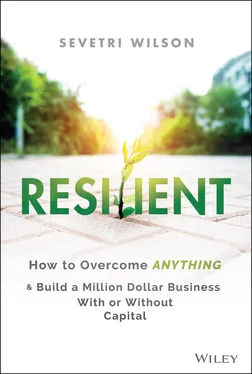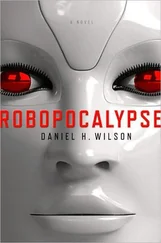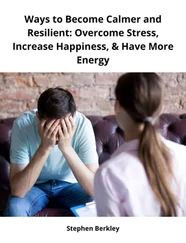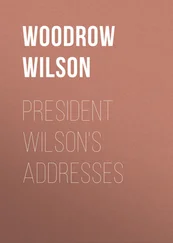I talk a bit about how we assembled the team to get this product launched later.
We were ultimately trying to solve for the bottleneck of communication that existed via emails and calls, standardizing the process, improving approval timelines, thus drastically reducing the time it took an average customer to go through the complete process from prep to filing to securing their exemption.
We wanted to go beyond just being a prep service, instead taking those customers from A through Z from prep to filing, and educating them throughout the process, so they understood what would be next as founders of nonprofits. Now that product was in market those customers began asking for other services. They were asking, What happens next? How do I run effective board meetings? How do I raise money?
How do I create brand and awareness for my cause in my community? And so we continued to think about how we could further productize the services that we were offering as consultants and continue to deliver these services through a software solution. And so the next product that we were thinking about was the nonprofit platform (NPX). The NPX platform was a natural second product because we could now begin delivering the capacity support that we were offering as consultants through a subscription-based platform, whether that was fundraising, curriculum design, or providing resources such as conflict interest statements to development materials, and finance tools to help manage budgets and funding, and how to stay on track and align to reporting milestones that are required for certain grants.
Yet, there was still something missing. As consultants, we knew that there were major silos that existed between organizations and the funders that granted to them. Additionally, there was usually a number of us hired to do various projects related to one program whether that was evaluation, technical assistance, or some other task.
The enterprise platform would be the next product we would launch in the market. This product would compliment the NPX platform to allow funders to provide the capacity support and technical assistance that we were providing to organizations on a touch-and-go basis year-round. Additionally, funders would have access to their own dashboard, which would allow them to capture insights and evaluations, report information in real time regarding their projects, and easily manage stakeholders such as board members. So, whether you were a public charity, foundation, government entity, or corporation, you could benefit from this product. This one-app solution would be geared toward solving a few hurdles: scaling impact, measuring impact over time, and allowing grant recipients to deliver reports directly to their funders without the heavy load of reporting and in the manner funders want to see it.
I was asked by Keely Anson, an investor at Incite Partners, why I wanted to democratize philanthropy. She admitted that her question was almost rhetorical in a sense because she knew why. Incite, though a venture fund, also had a nonprofit that supported organizations that aligned to their company mission of launching and backing the most important and innovative ideas in the country. Sometimes this doesn't look like a startup. Sometimes these ideas are within nonprofits. Because of this, Keely had worked with several of Incite's nonprofit partners and regardless of size she found the same challenges to be prevalent.
So, we began to build out our enterprise product to do a number of things but certainly to create a more harmonious flow between funders and their grant recipients.
Exempt Me Now would go through a rebrand to recognize our suite of products, and what would come out of that is Resilia, a SaaS technology platform that enables organizations to increase capacity, and enterprises (think cities, private foundations, and corporations) to scale impact.
I share this part of my journey to emphasize that you have to start somewhere. As you'll recall me mentioning, I'm not a technical founder, but if you have an idea and you're willing to execute against it, anything is possible. Today entrepreneurship has been glamorized in so many ways. I'm here to tell you that it's hard, and that success is achievable, but there's very little glamour in it at all. I'm excited to see all the aspiring entrepreneurs, and those who have broken through to attain success.
As a Black female entrepreneur, I'm among the fastest-growing demographic of new business owners. What we often don't talk much about is that the average Black female–led business generates less than $30,000 a year. Digitalundivided, a nonprofit studied the effects of the COVID-19 pandemic on Black female founders, finding that 82% reported a loss of revenue because of the crisis.
I do not say that we should start businesses to make money because I believe money is everything. But security is something, the security to take care of your family and/or yourself. What I know for sure is that not having financial security will make your days much longer, and will likely cause you an unhealthy amount of stress, but it's something that business owners often face on their climb. Coupling that with running a business and one that doesn't provide you the financial security you need in order to pay your bills will make it difficult to focus on growing your business because you're too focused on just trying to keep your head afloat and survive, literally.
The life of an entrepreneur can feel like you are on a roller coaster: there are a lot of ups and downs, you can't always see what turns are ahead of you, and the roller coaster can seem never ending. At one point you'll be having a high, perhaps a new product launch or amazing press that captures the essence of what you are doing and building; at another point there can be what feels like endless things going wrong. Customers complain, key team members move on, or you just feel burned out. Something that my mother shared with me that I now apply to entrepreneurship, not just my personal life, is: “Don't let your lows get so low you can't see the heavens, or your highs so high you can't touch the ground.”
2020 was a year of extreme highs and lows for me: just days before closing on my Series A round, COVID-19 began to rear its ugly little head, and I could feel my anxiety doing the same. I remember emailing my attorney, “We need to get our round closed!” I could feel the ground shifting—and just like that, it did.
Later, I'll get to how I raised a Series A during the onset of COVID-19, but first, let's take a step back and discuss what's needed for this journey.
Whether you are starting a bootstrapped business or what you hope to be a venture-backable startup, it's important to focus and really hone in on what it is you want to achieve.
Entrepreneurs or aspiring entrepreneurs often reach out to me to ask how to get started, and one of the biggest challenges I find they have is the inability to focus long enough to get started and then the inability to retain that focus to create consistent momentum. If you are someone who generally hops from one idea to the next, it could be because you lack focus. It also may be connected to what I describe as a “hustle mentality.” I'm not speaking of a hustle mentality that comes from a desire to get things done no matter what, but instead a mentality that finds you jumping from what seems like one opportunity to the next without truly having an end goal in mind. Though you might have success here, what I've found is that this mentality can leave you short-sighted, and success will often feel fleeting.
When starting something new, it's important to get focused and spend some time fleshing out your ideas, figuring out whether this is something you're truly passionate about. Will you keep going if you don't have any funding? Will you even start? Are you willing to make the necessary sacrifices that come along with everything that's about to happen to you? Are you willing to constantly have to level up and push yourself?
Читать дальше












